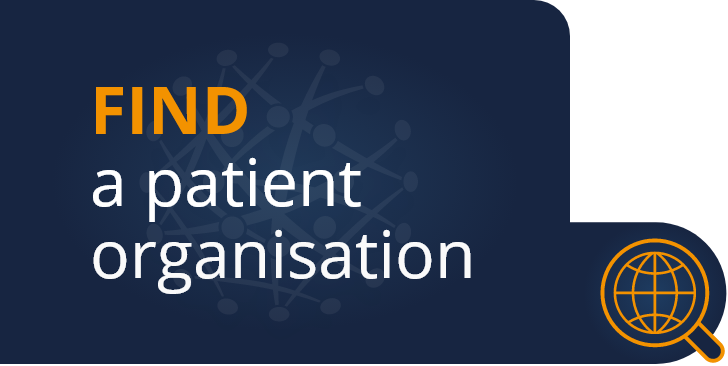The International Map of Axial Spondyloarthritis
The International Map of Axial Spondyloarthritis (IMAS) is a survey of people diagnosed with axial spondyloarthritis (axSpA); it assesses the impact and burden of axSpA from a patient’s perspective.
5557 people from 27 countries around the world completed the IMAS survey between 2017 and 2022.1 You can explore these results in the ‘axSpA in numbers’ page.
IMAS brings together patients, patient organisations, clinicians, and researchers from across the globe to address the questions that matter the most to patients.
By generating and disseminating evidence about how people with axSpA experience their disease physically, psychologically and socially, IMAS aims to raise the voice of the axSpA community.
ASIF has published a report on the IMAS findings. Our report, ‘The burden of axial spondyloarthritis: a global patient perspective’ reveals the reality of living with axSpA and demonstrates the numerous ways that people are impacted by the disease.
IMAS Vision
- Educate, support and empower people living with axSpA by showing them, through the data generated, that they are not alone in their disease.
- Ensure that the axSpA patient perspective is integrated into health policy and clinical decision-making to improve the quality of life and wellbeing of people with axSpA around the world.
IMAS Values
- Ensure that the quality of life and needs of people living with axSpA are central to everything that we do.
- Strive to gain a holistic understanding of the experiences of patients through various disciplines and multiple stakeholders united by a common interest.
- Use the evidence-based information and scientific rigour to guide any type of action.
- Support patient organisations in their work by using the IMAS data to provide evidence-based information and tools.
Who is involved?1-3

-
United States
228 participants
In partnership with:
Spondylitis Association of America (SAA)
Previous country -
Brazil
159 participants
In partnership with:
- Grupo de Apoio aos Pacientes Reumáticos do Ceará
- Grupal
Previous country -
Canada
542 participants
In partnership with:
Canadian Spondylitis Association (CSA)
Previous country -
Spain
680 participants
In partnership with:
Coordinadora Española de Asociaciones de Espondiloartritis (CEADE)
Previous country -
United Kingdom
374 participants
In partnership with:
National Axial Spondyloarthritis Society (NASS)
Previous country -
Turkey
289 participants
In partnership with:
Ankilozan Spondilit Hasta Derneği (ASHAD)
Previous country -
Sweden
71 participants
In partnership with:
Reumatikerförbundet
Previous country -
Russia
233 participants
In partnership with:
Ankylosing Spondylitis Society in Russia
Previous country -
South Africa
146 participants
In partnership with:
Axial Spondyloarthritis Association of South Africa
Previous country -
Taiwan
112 participants
In partnership with:
Association of Ankylosing Spondylitis, R.O.C
Previous country -
Belgium
76 participants
In partnership with:
Arthrites, VVSA and Reumanet
Previous country -
Colombia
164 participants
In partnership with:
Fundación de Espondilitis Anquilosante en Colombia, FUNDARE
Previous country -
France
638 participants
In partnership with:
Association Française de Lutte Antirhumatismale (AFLAR)
Previous country -
India
232 participants
In partnership with:
- Antardhwani
- Ankylosing Spondylitis Welfare Society
- Stand for AS
Previous country -
Italy
134 participants
In partnership with:
Associazione Nazionale Persone con Malattie Reumatologiche (APMAR)
Previous country -
Lithuania
59 participants
In partnership with:Bechterevo Liga Sergančiųjų Draugija
Previous country -
Norway
509 participants
In partnership with:
Spondyloartrittforbundet Norge (SPAFO)
Previous country -
Philippines
128 participants
In partnership with:
Axial Spondyloarthritis Association of the Philippines (ASAPh)
Previous country -
Slovenia
83 participants
Previous country -
Germany
78 participants
Previous country -
Switzerland
80 participants
Previous country -
Austria
82 participants
Previous country -
Netherlands
107 participants
Previous country -
Korea
128 participants
Previous country -
Mexico
60 participants
Previous country -
Argentina
115 participants
Previous country -
Costa Rica
50 participants
Previous country
axSpA in numbers1,2
Understanding the impact of axSpA on people’s lives
The data generated by IMAS demonstrates how living with axSpA can affect almost every part of a person’s life, from physical and emotional wellbeing to decisions about education, work and relationships.
0
Total number of participants
55.4% females (n=3080)
44.6% males (n=2475)
2 responses did not indicate
male or female
Age range:
18 – 87 years
mean = 44 years
Working towards improvements
improvements
AxSpA can have a devastating effect on both a person’s physical and mental wellbeing. People with axSpA report mental health concerns as a result of being worried about the lifelong effects of their disease, including their ability to work, be physically active and their ability to retain physical and financial independence without becoming a burden to others.
By delving deeper into these daily issues, the IMAS team will continue to work towards better outcomes for people with axSpA, supporting patient organisations and working with key stakeholders for a better approach to axSpA policy and treatment. We aim to put the patient at the centre of every decision.
Our global IMAS report clearly demonstrates the challenges and unmet needs of people living with axSpA. As such, we call on policymakers and healthcare professionals to:
- Undertake a country-level assessment, working with patient groups and clinical experts, using IMAS data to better understand the needs of people with axSpA. Drawing on the outputs of the assessment, identify measurable actions to address key challenges, and regularly review progress.
- Prioritise early and accurate axSpA diagnosis through reliable referral systems that promptly transition patients from primary care to an appropriate specialist (ideally, a rheumatologist), with the aim of avoiding delays in diagnosis that often contribute to poorer long term health outcomes and higher social and healthcare system costs.
- Actively promote multidisciplinary care coordinated by an appropriate specialist and supported by relevant physical and mental health specialists, with a focus on ensuring optimal treatment and outcomes.
- Work with employers’ and patients’ groups to define solutions that enable people with axSpA to access and remain part of the workforce.
- Educate primary care health professionals to recognise signs and symptoms of axSpA and to facilitate appropriate and timely referral to an appropriate specialist (ideally a rheumatologist).
- Increase awareness and recognition of the signs and symptoms of axSpA amongst all healthcare professionals that may see undiagnosed people with symptoms. This includes physiotherapists, orthopaedic doctors and any specialists that treat associated manifestations of axSpA, such as ophthalmologists, dermatologists and gastroenterologists.
- Ensure that people with axSpA have co-developed, individually tailored and regularly reviewed care plans in place – coordinated by an appropriate specialist.
- Tailor individual care plans to maximise long-term quality of life, recognising an individual’s treatment goals and their physical, psychological, and socioeconomic needs.
- Deliver education and training initiatives that help to identify patients requiring specific mental health support and ensure access to appropriate care is available when needed.
Read IMAS publications
-
2024Diagnostic Delay in Patients included in the International Map of Axial Spondyloarthrtis: Associations with Geographic, Socio-demographic and Disease-related Factors
-
2024Females With Axial Spondyloarthritis Have Longer Diagnostic Delay and Higher Burden of the Disease. Results From the International Map of Axial Spondyloarthritis (IMAS)
-
2024Do patients with axial spondyloarthritis with active disease suffer from greater disease burden and work impairment? Results from the International Map of Axial Spondyloarthritis (IMAS)
-
2024The International Map of Axial Spondyloarthritis (IMAS). Results from the Perspective of 5,557 Patients from 27 Countries around the World
-
2024Factors Associated with Poor Mental Health in Patients with Axial Spondyloarthritis . Results from the International Map of Axial Spondyloarthritis (IMAS)
-
2024Regional Differences in Patient Diagnosis Journey and Healthcare Utilization. Results from the International Map of Axial Spondyloarthritis (IMAS)
-
2023Regional Differences in Clinical Phenotype of Axial Spondyloarthritis. Results from the International Map of Axial Spondyloarthritis (IMAS)
-
2021The Impact of Axial Spondyloarthritis on Mental Health in Europe: Results from the EMAS Survey
-
2021A Benchmarking Study Evaluating Axial Spondyloarthritis Burden in Spain and Other European Countries. Results from the Spanish Atlas and the European Map of Axial Spondyloarthritis (EMAS) Studies
-
2021Gender Differences in Patient Journey to Diagnosis and Disease Outcomes: Results from the European Map of Axial Spondyloarthritis (EMAS)
-
2021Patient-reported Impact of Axial Spondyloarthritis on Working Life: Results from the EMAS Survey
-
2021Identifying Parameters Associated with Delayed Diagnosis in Axial Spondyloarthritis: Data from the European Map of Axial Spondyloarthritis
-
2019The European Map of Axial Spondyloarthritis: Capturing the Patient Perspective - an Analysis of 2846 Patients across 13 Countries
-
EULAR 2024Regional Differences in Patient Diagnosis Journey and Healthcare Utilization. Results from the International Map of Axial Spondyloarthritis (IMAS)
-
EULAR 2024What Factors Are Associated with Pain Intensity in Axial Spondyloarthritis? Results from the International Map of Axial Spondyloarthritis (IMAS)
-
EULAR 2024Factors Associated with Poor Mental Health in Patients with Axial Spondyloarthritis . Results from the International Map of Axial Spondyloarthritis (IMAS)
-
EULAR 2024The Impact of Axial Spondyloarthritis on Patients’ Sexual Life. Results from the International Map of Axial Spondyloarthritis (IMAS)
-
EULAR 2023Regional Differences in Clinical Phenotype of Axial Spondyloarthritis. Results from the International Map of Axial Spondyloarthritis (IMAS)
-
EULAR 2023The International Map of Axial Spondyloarthritis (IMAS). Results from the Perspective of 5,557 Patients from 27 Countries around the World
-
EULAR 2023The International Map of Axial Spondyloarthritis Global Report: Supporting the Inclusion of the Patient Perspective in Policy and Clinical Practice
-
EULAR 2023Which Factors are Associated with Clinically High Disease Activity in Axial Spondyloarthritis? Results from the International Map of Axial Spondyloarthritis (IMAS)
-
EULAR 2023Females with Axial Spondyloarthritis Report Higher Burden of Disease and Worse Patient-reported Outcomes. Results from the International Map of Axial Spondyloarthritis (IMAS)
-
EULAR 2023Diagnostic Delay in Patients Included in the International Map of Axial Spondyloarthrtis: Associations with Geographic, Socio-demographic and Disease-related Factors
-
EULAR 2022Assessment of the Impact of Axial Spondyloarthritis on Patient's Social Life: Results of the European Map of Axial Spondyloarthritis (EMAS)
-
EULAR 2022Adapting to Living with Axial Spondyloarthritis: Results from the European Map of Axial Spondyloarthritis (EMAS)
-
ACR Convergence 2021Can Belonging to an AxSpA Patient Organization be Associated with Benefits to its Members? Results from the European Map of Axial Spondyloarthritis (EMAS)
-
ACR Convergence 2021Why is it so Difficult for AxSpA Patients to Find a Job? Results from the European Map of Axial Spondyloarthritis (EMAS)
-
ACR Convergence 2021Factors Associated with Pain Intensity in Axial Spondyloarthritis. Results from the EuropeanMap of Axial Spondyloarthritis (EMAS)
-
PANLAR 2021Factors Associated with Inability to Work and Disability in Patients with Axial Spondyloarthritis. Results from the EMAS Study
-
PANLAR 2021Presence and Associated Factors of Fatigue in Patients with Axial Spondyloarthritis. Results from the European Map of Axial Spondyloarthritis (EMAS)
-
PANLAR 2021Factors Associated with Engaging in Physical Activity in Axial Spondyloarthritis. Results from the European Map of Axial Spondyloarthritis (EMAS)
-
EULAR 2021Factors Associated with Inability to Work and Disability in Patients with Axial Spondyloarthritis. Results from the European Map of Axial Spondyloarthritis (EMAS)
-
EULAR 2021Patient Journey with Axial Spondyloarthritis: Critical Issues from the Patient Perspective. Results from the European Map of Axial Spondyloarthritis (EMAS)
-
EULAR 2021Presence and Associated Factors of Fatigue in Patients with Axial Spondyloarthritis. Results from the European Map of Axial Spondyloarthritis (EMAS)
-
EULAR 2021Health Impact of Overweight and Obesity in Patients with Axial Spondyloarthritis. Results from the European Map of Axial Spondyloarthritis (EMAS)
-
SCR 2021Gender Differences in Axial Spondyloarthritis: the European Map of Axial Spondyloarthritis (EMAS) Study
-
EULAR 2020Identification of Parameters Associated with a Diagnostic Delay in Axial Spondyloarthritis: Results from the European Map of Axial Spondyloarthritis (EMAS)
-
EULAR 2020Gender Differences in Patient Journey to Diagnosis and Patient-Reported Outcomes: Results from the European Map of Axial Spondyloarthritis (EMAS)
-
EULAR 2020The Impact of Axial Spondyloarthritis on Patients’ Sexual Life: Results from the European Map of Axial Spondyloarthritis (EMAS)
-
EULAR 2020Onset of Axial Spondyloarthritis Repercussions on Patients’ Social and Family Life: Results from the European Map of Axial Spondyloarthritis (EMAS)
-
ACR 2020Prevalence and Associated Factors of Sleep Disorders in Patients with Axial Spondyloarthritis. Results from the European Map of Axial Spondyloarthritis (EMAS)
Stay connected
The IMAS global data is being used around the world to support patients and patient organisations. We are continuing to communicate the reality of living with axSpA and invite you to stay connected with this work.
Follow us on

IMAS partners

Global collaboration
As of 2 January 2024, IMAS is owned solely by ASIF, following an in-kind donation of the project by Novartis Pharma AG
References:
- Garrido-Cumbrera M, Poddubnyy D, Sommerfleck F, et al. POS0298 THE INTERNATIONAL MAP OF AXIAL SPONDYLOARTHRITIS (IMAS). RESULTS FROM THE PERSPECTIVE OF 5,557 PATIENTS FROM 27 COUNTRIES AROUND THE WORLD. Annals of the Rheumatic Diseases 2023;82:391-392.
- The burden of axial spondyloarthritis: a global patient perspective, January 2024; Axial Spondyloarthritis International Federation. https://asif.info/imas-global-report/
- ASIF data on file



